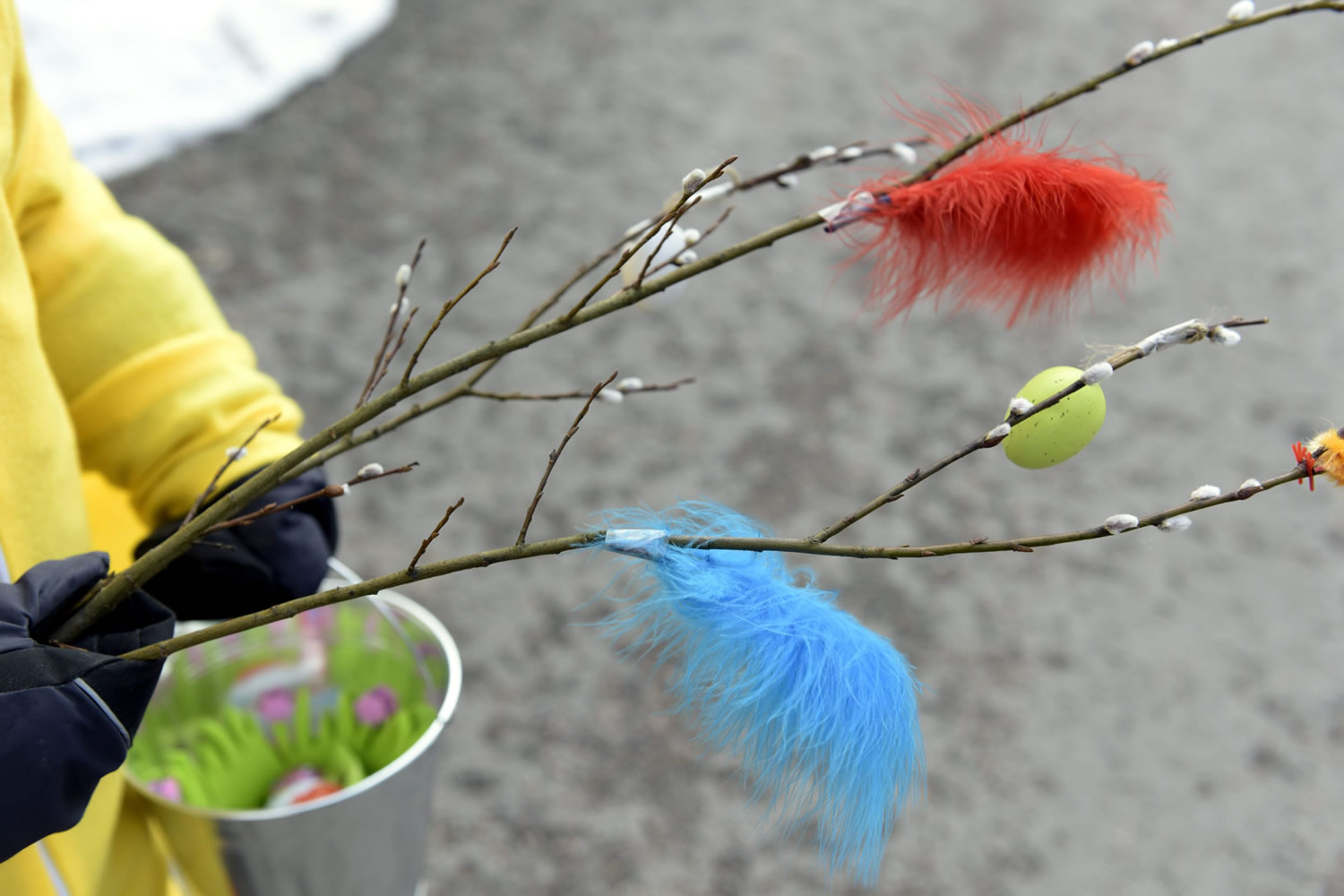HELSINKI — The witches are out, but don’t despair. Instead of casting evil spells, they wish you well, although you’d better have some candy on hand.
Every year before Easter, girls dressed as witches appear on Finnish doorsteps in a blend of Eastern and Western religious traditions related to spring. They hand over catkin branches, reciting wishes for good health in exchange for chocolate or other candies.
“A twig for you, a treat for me!” 8-year-old “sorcerer” Isara chants, waving her catkin wand decorated with paper strips and feathers. In exchange, the “witch” eagerly receives a handful of chocolate eggs, which she stuffs into a copper pot.
“The most important thing are the sweets,” her 8-year-old friend Linda said Sunday.
On the northeastern periphery of Europe, the Finnish version of trick-or-treat reflects the Nordic country’s straddling of East and West, combining the Russian Orthodox tradition of blessing cattle and farms with branches of pussy willow and the Swedish custom of dressing up as witches before Easter.



